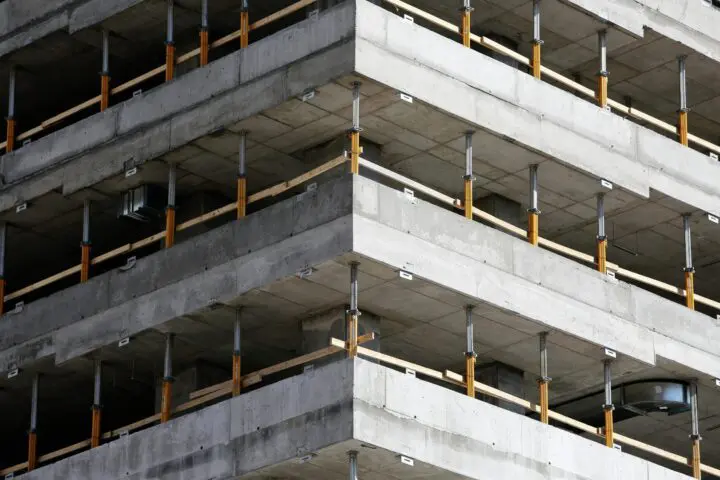Controlling Delays or Extras to Focus on Success
Contractors and clients frequently make claims against design professionals for damages resulting from construction delays.
Text
Contractors and clients frequently make claims against design professionals for damages resulting from construction delays. These delays may include claims for extra compensation allegedly arising from changes in the work caused by errors or omissions in the plans and specifications. The defense of these claims often involves an expensive team of analysts, consultants, experts, and attorneys, plus substantial disruption of the practice of the design professional.

On complex projects, long delays can result in massive claims, with activities on the schedule’s critical path delayed by multiple factors. Some delays may be the responsibility of the client, some the responsibility of the contractor, and others the responsibility of some component of the design team. Compounding the problem—and increasing the cost—is the fact that the impact of multiple delay events may be experienced concurrently.
Many factors beyond the control of the design professional influence the decision of the client or contractor to initiate litigation. These factors include underbidding of the project, unusually inclement weather, poor management of the construction contract by the client or contractor, personality difficulties, and the decision by clients to make changes during construction.
In addition, recent court decisions have tended to eliminate the requirement of privity of contract for parties to recover economic losses. Some states still restrict the ability of a third party (construction contractors) to recover for economic losses such as those caused by actual delays and overhead or other extra expenses. Increasingly, however, contractors are allowed to sue design professionals, directly alleging that the design professional’s negligence resulted in the extra costs caused by delays.
Although complete prevention of litigation is impossible, there are certain strategies by which the professional can maximize protection in such situations. The suggestions listed below are not an exhaustive list, but they have been found to be helpful in the more frequently recurring cases that architects face.
Preventive maintenance: Tips in risk reduction
- Design with adequate details and clear specifications.
Lack of clarity, ambiguity, and even insignificant errors and omissions provide a fruitful source of complaints by contractors and clients. Therefore, the highest priority should be given to quality control at all levels and to developing a good set of plans and specifications.
- Insist on a pre-award conference between the client and contractor prior to signing the contract.
Whether jobs are competitively bid or negotiated, it is always helpful to have a pre-award conference conducted by the design professional, with both the client and contractor in attendance. The design professional should have a staff person familiar with the project present for the exclusive purpose of taking detailed and accurate notes of the meeting to be circulated to all parties for correction before problems can develop on the project.
- Establish in the design professional/client contract a clear and precise understanding of exactly what performance is expected of the design professional during construction.
Avoid such language as “supervision” or “ensure.” Use current, industry-consensus standard forms that match the scope of services being provided wherever possible. On major projects, discuss with legal counsel the possibility of spelling out exactly the frequency and timing of design professional appearances on the jobsite for routine visits or observations. Frequently, general language commonly found in client/design professional agreements is a source of different expectations between the client and design professional.
- Choose carefully the personnel who will work with the contractor and client.
Claims frequently arise from personality differences between the design professional’s personnel and the contractor’s personnel. When a project encounters trouble, personality differences often can lead to an aggravated situation. When faced with trouble on the job, the design professional’s representative must be able to keep their temper, act judiciously, and be both fair and firm. Daily field work is often assigned to an inexperienced or unqualified person because of economics. The cost of defending this practice in court greatly exceeds the savings in salary.

5. Keep detailed records of all jobsite contacts.
It is very helpful for litigation purposes to note times, dates, weather conditions, work being performed by the general contractor and subcontractors, oral conversations, contractor’s equipment on the jobsite, and other pertinent job data. Whenever oral conversations occur with the contractor or subcontractors, you should note the time, place, and persons present. All unusual conditions or events should be documented.
These documents are invaluable in determining what occurred during the course of construction. Often, recollections fade, witnesses die or move away, or the credibility of a witness may be doubtful. Documentary proof of this type is very persuasive and helpful to the design professional’s defense attorney.
- Develop effective and efficient procedures for handling shop drawings and submittals.
Avoid delays in processing shop drawings or making unreasonable rejection and resubmittal requirements. Require the contractor to submit a schedule at the beginning of the project. Keep a log showing the date and time that a shop drawing or submittal is received, the identity of all persons who process the submittal, the date the submittal is transmitted back to the contractor or client, and any relevant comments. When a submittal is incomplete or inadequate, try to adopt a helpful attitude in explaining what information or changes are required, but do not “correct” the submittal.
- Special care should be given to the handling of job correspondence.
Care should be given to make sure that the content and style of job correspondence is clear and businesslike. Important telephone discussions should be documented either by job correspondence or internal memoranda. The same rules of clarity of expression and businesslike tone apply to internal memoranda as to job correspondence.
The project manager must have an effective and efficient system of responding to inquiries by the contractor and client in a timely manner. Delay in response is often capitalized upon by counsel for the opposition as proof of inefficient management of the job by the design professional.
- Pay special attention to job schedules.
It is common for specification provisions to require the contractor to submit job schedules to the design professional. It is easy to simply fold these away and pay little attention to them. However, the job schedule should be constantly checked for comparison of actual performance against planned performance. The design professional should be looking for areas where the contractor is losing time. This may help prevent lost time and minimize the prospect of litigation.
Handling trouble
The most serious problem design professionals can face is when an error, omission, or inadequacy in the plans or specifications results in a stoppage of work or a prolonged slowdown. The attitude and manner of the design professional’s response to such a problem is just as important as the technical solution.

Whenever an error has been made (or is even suspected of being made), immediately put the insurance carrier on notice and advise legal counsel. Avoid false or exaggerated accusations that the contractor or other project members are the cause of the problem, just as design professionals should avoid making admissions of their own responsibility without consultation with counsel. Adopt a calm and patient attitude, but work speedily and effectively towards a solution that allows the job to progress efficiently.
A common symptom of future trouble is a job that is moving slowly and behind schedule. Whenever this occurs for reasons that do not appear to be related to problems with the plans and specifications, it is a good rule of thumb to assume the contractor may look for a scapegoat. An indicator that this may happen is when the design professional begins to see a flood of letters from the contractor trying to “set up” the design professional for future claims. When this happens, be sure to respond to letters as promptly as possible in light of the principles discussed above. Likewise, consult with counsel to plan responses to critical items. Keep the tone of correspondence as fair and firm as possible.
Another common problem that may arise in the design professional’s relationship with the client stems from the design professional’s role as a “judge or arbiter” on contractor’s claims. The client frequently expects the design professional to side with him or her when a legitimate extra is identified since the client is paying the design professional. Problems with the client cannot be entirely eliminated, but they can be reduced by careful explanation of the design professional’s “quasi-judicial” role during contract administration. It is good to set forth the concept of the design professional’s independent role on requests for time extensions and extras in writing prior to the time the contract is signed. Needless to say, the design professional should retain a fair and independent-minded attitude when ruling on such claims made by the contractor or client during construction contract administration.
Conclusion
It is difficult to avoid involvement in litigation when a project is significantly delayed and extra costs are incurred. However, the design professional’s knowledge of the plans and specifications and the ability to act as the client’s representative in a competent and careful manner can mitigate the risk of the design professional being held responsible for delays and extras.
Guilty Until Proven Innocent: Claims Defense Documentation
Bulletproof Contract Administration: Managing Risk During Construction
More on Professional Liability

2024 Professional Liability Trends Every Architect Should Know
News ▪ April 2025
Ethical challenges of generative AI in architectural practice
News ▪ February 2025
Pitfalls of the Profession by LegaLine
Components ▪ Contracts ▪ Legal ▪ Professional Liability ▪ Professional Practice ▪ Risk ▪ Small Firms ▪ Webinar